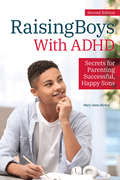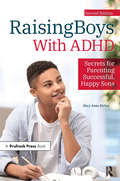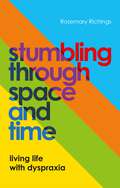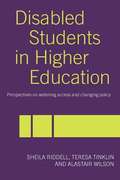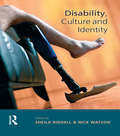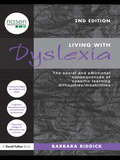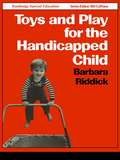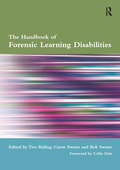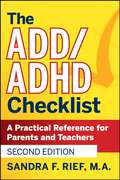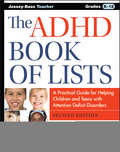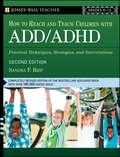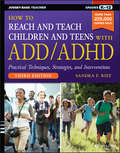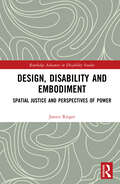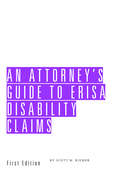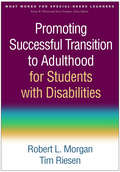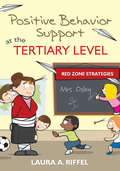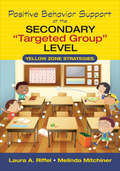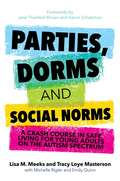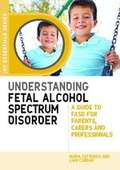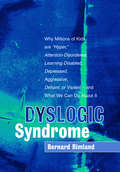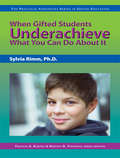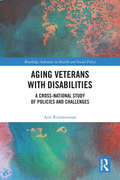- Table View
- List View
Raising Boys With ADHD: Secrets for Parenting Successful, Happy Sons
by Mary Anne RicheyThe second edition of the best-selling Raising Boys With ADHD features the latest information on research and treatment for boys with ADHD. This book:Empowers parents to help their sons with ADHD find success in school and beyond.Covers topics not often found in other parenting guides.Provides a strength-based approach to helping boys discover their strengths and abilities.Helps boys become motivated, successful, and independent adults.Discusses the preschool years, early diagnosis, and strategies for teens transitioning to work and college.Filled with practical knowledge, a dynamic action planning guide, resources, and tools needed to help parents address the many strengths and challenges of boys with ADHD, this book provides parents with encouragement and hope for the future.
Raising Boys With ADHD: Secrets for Parenting Successful, Happy Sons
by Mary Anne RicheyThe second edition of the best-selling Raising Boys With ADHD features the latest information on research and treatment for boys with ADHD. This book:Empowers parents to help their sons with ADHD find success in school and beyond.Covers topics not often found in other parenting guides.Provides a strength-based approach to helping boys discover their strengths and abilities.Helps boys become motivated, successful, and independent adults.Discusses the preschool years, early diagnosis, and strategies for teens transitioning to work and college.Filled with practical knowledge, a dynamic action planning guide, resources, and tools needed to help parents address the many strengths and challenges of boys with ADHD, this book provides parents with encouragement and hope for the future.
Stumbling through Space and Time: Living Life with Dyspraxia
by Rosemary Richings"In 1994, I was diagnosed with dyspraxia, and I was unable to do everything that children are expected to do by the time they're in school. For me, this included everything from riding a bike and catching a ball, to reading, writing, and basic math."When talking about her dyspraxia, Rosemary Richings is often met with confusion. Why do so few people understand dyspraxia, or even know what it is?Rosemary shares her experience of growing up dyspraxic, and how it impacts her sense of space, time and co-ordination. Diagnosed with DCD at the age of four, Rosemary shares her insights and experience dealing with challenges, from coping with bullies in school to choosing a dyspraxia-friendly university, pursuing self-employment and travelling abroad.Rosemary shares guidance for others about what helped her develop her skills, including ballet and gymnastics, the Wilbarger Protocol (brushing therapy) and equestrian therapy. Full of practical tips and insights into the strategies that gave Rosemary the confidence to succeed, this is an essential guide for other dyspraxics and those supporting them, which shows you how you too can thrive as a dyspraxic person.
Wheels for Walking
by Sandra RichmondAfter a car accident severs her spinal cord, eighteen-year-old Sally faces a long and painful adjustment to life as a quadriplegic.
Disabled Students in Higher Education: Perspectives on Widening Access and Changing Policy
by Sheila Riddell Teresa Tinklin Alastair WilsonThe authors present results gleaned from eight higher education institutions in Great Britain which demonstrate the level of participation by disabled students.
Disability, Culture and Identity
by Sheila Riddell Nick WatsonFirst published in 2003. Routledge is an imprint of Taylor & Francis, an informa company.
Living With Dyslexia: The social and emotional consequences of specific learning difficulties/disabilities (nasen spotlight)
by Barbara RiddickThis book reinforces the need for understanding and support for childrenwith dyslexia from parents and teachers, but also the importance of thechildren's own understanding of their strengths and weaknesses in orderto fulfil their potential. It should be recommended reading for allthose involved in dyslexia. - Professor Angela Fawcett, Director of the Centre for Child Research, Swansea University What is it like living with dyslexia on a day-to-day basis? Based on interviews with dyslexic children and their families, this insightful book presents first-hand accounts of how dyslexia affects the children themselves and the people around them. Living with Dyslexia, Second Edition places the original fascinating findings within the context of current research and practice in the UK, Europe, Australia and the USA. The author: examines issues of confidence and self-esteem; explores the coping strategies adopted by children and adults with dyslexia; investigates the concept of dyslexia-friendly schools; studies how children were first identified as having dyslexia, and the social and emotional difficulties they encountered; offers guidance on how teachers and parents can best support children with specific learning difficulties; considers the cognitive, educational, social and emotional perspectives in order for teachers and parents to gain a better understanding of dyslexia. This new edition provides an updated account of cognitive research and examines important changes in relation to Special Educational Needs policy and practice in the last ten years, including the Revised SEN Code of Practice (2001), Removing Barriers to Achievement (2004) and the National Literacy Strategy (2006). Living with Dyslexia recognises that the voices of children with dyslexia are increasingly important in developing good educational practice and makes an important contribution to the literature on dyslexia.
Toys and Play for the Handicapped Child
by Barbara RiddickFirst published in 1982. Routledge is an imprint of Taylor & Francis, an informa company.
The Handbook of Forensic Learning Disabilities
by Tim Riding Caron Swann Bob SwannThis comprehensive and practical guide helps professionals and staff within hospitals change the way they collect record store and use clinical information about patients. It illustrates how clinical governance and evidence-based practice can be easily addressed by modernising clinical information practice to benefit patients and improve staff and service efficiency. As well as helping organisations define and establish improved systems this book is of continuing use for all healthcare professionals who make store and use patient records. 'High quality shared record keeping is recognised as being fundamentally important to good patient care. This book offers an excellent practical approach to addressing the changes needed in clinical record keeping to support improved patient care clinical governance better management information and the move towards electronic patient records. It brings together a strong clinical focus with the informatics principles needed to support a successful move to modern record keeping.' Yvonne Baker and Tricia Woodhead in the Foreword It will be a useful guide for clinicians and all other health professionals dealing with clinical information.
The ADD/ADHD Checklist
by Sandra F. RiefThe bestselling guide, fully revised and updated, offering practical information and tips to help every child with ADHD succeedThe ADD/ADHD Checklist helps parents and teachers to better understand children and teenagers with attention problems and provide the kind of support and intervention that is crucial to kids' success. Presented in a concise, easy-to-read checklist format, the book is packed with practical advice and information on a wide range of topics, including what we do and don't know about ADHD, probable causes, critical elements for school success, the most commonly prescribed medications, what children with ADHD need at home, effective behavioral strategies, how to help kids stay organized, and advocating for an ADHD child.
The ADHD Book of Lists
by Sandra F. RiefPractical ADHD management techniques for parents and teachers The ADHD Book of Lists is a comprehensive guide to ADHD/ADD, providing the answers parents, teachers, and other caregivers seek in a convenient list format. This new second edition has been updated with the latest research findings and resources, including the most up to date tools and strategies for helping these children succeed. Each aspect of ADHD/ADD is fully explained, from diagnosis to intervention, providing readers with the insight they need to make the best choices for the affected child. Coverage includes the latest medications and behavioral management techniques that work inside and outside the classroom, plus guidance toward alleviating individual struggles including inattention, impulsivity, executive function and subject-specific academic issues. Readers learn how to create a collaborative care team by bringing parents, teachers, doctors, therapists, and counselors on board to build a comprehensive management plan, as well as the practical techniques they can use every day to provide these children the support they need to be their very best. Attention Deficit/Hyperactivity Disorder cannot be cured, but it can be managed. Children with ADHD/ADD do not outgrow it, but the adults in their lives play a major role in what these children achieve and how they feel about themselves. This book is an insightful guide to supporting children with ADHD, and giving them the mental, emotional, and practical tools that boost their confidence and abilities. Investigate comprehensive treatments, including ADHD coaching Learn strategies for strengthening organization, working memory and other executive functions. Understand effective classroom management of students with ADHD Discover ways to help struggling children succeed despite the challenges There is a high correlation between ADHD and a number of negative outcomes when not treated, but the tide is turning as more effective management becomes commonplace. The ADHD Book of Lists is the complete easy-to-reference guide to practical ADHD management.
How to Reach and Teach Children and Teens with ADD/ADHD
by Sandra F. RiefThe most up-to-date and comprehensive vital resource for educators seeking ADD/ADHD-supportive methods How to Reach and Teach Children and Teens with ADD/ADHD, Third Edition is an essential guide for school personnel. Approximately 10 percent of school-aged children have ADD/ADHD--that is at least two students in every classroom. Without support and appropriate intervention, many of these students will suffer academically and socially, leaving them at risk for a variety of negative outcomes. This book serves as a comprehensive guide to understand and manage ADHD: utilizing educational methods, techniques, and accommodations to help children and teens sidestep their weaknesses and showcase their numerous strengths. This new 2016 edition has been completely updated with the latest information about ADHD, research-validated treatments, educational laws, executive function, and subject-specific strategies. It also includes powerful case studies, intervention plans, valuable resources, and a variety of management tools to improve the academic and behavioral performance of students from kindergarten through high-school. From learning and behavioral techniques to whole group and individualized interventions, this indispensable guide is a must-have resource for every classroom--providing expert tips and strategies on reaching kids with ADHD, getting through, and bringing out their best. Prevent behavioral problems in the classroom and other school settings Increase students' on-task behavior, work production, and academic performance Effectively manage challenging behaviors related to ADHD Improve executive function-related skills (organization, memory, time management) Apply specific research-based supports and interventions to enable school success Communicate and collaborate effectively with parents, physicians, and agencies
How to Reach and Teach Children and Teens with ADD/ADHD
by Sandra F. RiefThe most up-to-date and comprehensive vital resource for educators seeking ADD/ADHD-supportive methods How to Reach and Teach Children and Teens with ADD/ADHD, Third Edition is an essential guide for school personnel. Approximately 10 percent of school-aged children have ADD/ADHD—that is at least two students in every classroom. Without support and appropriate intervention, many of these students will suffer academically and socially, leaving them at risk for a variety of negative outcomes. This book serves as a comprehensive guide to understand and manage ADHD: utilizing educational methods, techniques, and accommodations to help children and teens sidestep their weaknesses and showcase their numerous strengths. This new 2016 edition has been completely updated with the latest information about ADHD, research-validated treatments, educational laws, executive function, and subject-specific strategies. It also includes powerful case studies, intervention plans, valuable resources, and a variety of management tools to improve the academic and behavioral performance of students from kindergarten through high-school. From learning and behavioral techniques to whole group and individualized interventions, this indispensable guide is a must-have resource for every classroom—providing expert tips and strategies on reaching kids with ADHD, getting through, and bringing out their best. Prevent behavioral problems in the classroom and other school settings Increase students' on-task behavior, work production, and academic performance Effectively manage challenging behaviors related to ADHD Improve executive function-related skills (organization, memory, time management) Apply specific research-based supports and interventions to enable school success Communicate and collaborate effectively with parents, physicians, and agencies
Design, Disability and Embodiment: Spatial Justice and Perspectives of Power (Routledge Advances in Disability Studies)
by Janice RiegerThis timely book explores the spatial and social injustices within our streets, malls, schools, and public institutions. Taken-for-granted acts like going for a walk, seeing an exhibition with a friend, and going to school are, for people with disabilities, conditional or precluded acts due to exclusion by design. This book stimulates debate and discussion about current practice and studies in spatial design in the context of disability and the growing need for inclusive design globally. Case studies of inclusive design in spaces like museums, malls, galleries and universities are presented to challenge and expose the perspectives of power and spatial injustices that still exist within these spaces today. The international case studies presented purposely privilege the voices and perspectives of people with disabilities, to expose the multisensorial perspectives of spatial justice in order to understand inclusion more holistically through embodiment. If you are an architect, designer, arts educator, curator or museum professional or just want a world where spatial justice is possible, then this book will provide you with a new perspective of spatial design through critical disability studies, allyship and codesign, where tangible approaches and practices for inclusive design are explored.
An Attorney's Guide to ERISA Disability Claims
by Scott RiemerAn Attorney's Guide to ERISA Disability Claims is an essential resource that gives you the specialized knowledge you need to thoroughly prepare ERISA disability claims through both the initial application process and the insurance company's appeal process. Disability insurers scrutinize claims for any shred of evidence to support a decision that the insured can still perform her occupation. Sometimes just a line or two in the doctor's treatment notes or a minute on a surveillance video is enough. In assessing an occupation's requirements, insurers routinely ignore significant demands, such as travel, long hours, high stress, and quick thinking. This comprehensive guide tells you how to anticipate and respond to these and similar (sometimes outrageous) insurer tactics. The surest way to resolve your client's ERISA disability claim favorably without litigation is to follow Scott Riemer's guidance. Prepare your client's application and appeal as though you expect litigation to be necessary. When insurers know you are ready for court, they are more likely to pay the claim and save litigation for someone else's client. If you do need to litigate, you will be ready.
Promoting Successful Transition to Adulthood for Students with Disabilities (What Works for Special-Needs Learners)
by Tim Riesen Robert L. MorganComprehensively addressing the challenges of transition, this book provides practical knowledge and tools geared toward real-world educators. It presents clear guidelines for all aspects of team-based transition planning for individuals with various levels of disability, illustrated with vignettes of three secondary students who are followed throughout the book. The authors describe evidence-based practices for conducting assessments and promoting optimal outcomes in the areas of employment, postsecondary education, and independent living. Keys to family involvement, self-determination, interagency collaboration, and problem solving are highlighted. Several reproducible forms can be downloaded and printed in a convenient 8 1/2" x 11" size.
Positive Behavior Support at the Tertiary Level: Red Zone Strategies
by Laura A. RiffelHelp students move from the “red zone” to the success zone! How would you respond to a student who has tantrums or hits other students? These and other extremely challenging behaviors are identified as tertiary level or “red zone” by the Positive Behavioral Interventions and Supports (PBIS) model. Laura A. Riffel describes in teacher-friendly terms how to use this model to create an intervention plan to modify behavior that disrupts learning. Research-based tools for general and special educators, administrators, and counselors include: A data-driven approach to solving problems Techniques and strategies for collecting and analyzing data Methods for teaching replacement behavior Examples that show how to modify consequences
Positive Behavior Support at the Secondary "Targeted Group" Level: Yellow Zone Strategies
by Laura A. Riffel Melinda S. MitchinerSeal the gaps in student learning with targeted intervention This practical resource addresses the gap between school-wide disciplinary policies and interventions individually tailored to the most problematic students. Focusing on proactive strategies for small-group interventions, Laura Riffel’s research and techniques include: General strategies that can be applied at the individual level: Self-management, proximity control, peer mentoring and more Comprehensive action plans to anticipate any disciplinary issues A behavior rating sheet proven effective in improving student behavior “Funk Sway” For The Classroom: Using Feng Shui principles to create a classroom environment that enhances productivity, learning and creativity
Positive Behavior Support at the Secondary "Targeted Group" Level: Yellow Zone Strategies
by Laura A. Riffel Melinda S. MitchinerSeal the gaps in student learning with targeted intervention This practical resource addresses the gap between school-wide disciplinary policies and interventions individually tailored to the most problematic students. Focusing on proactive strategies for small-group interventions, Laura Riffel’s research and techniques include: General strategies that can be applied at the individual level: Self-management, proximity control, peer mentoring and more Comprehensive action plans to anticipate any disciplinary issues A behavior rating sheet proven effective in improving student behavior “Funk Sway” For The Classroom: Using Feng Shui principles to create a classroom environment that enhances productivity, learning and creativity
Parties, Dorms and Social Norms: A Crash Course in Safe Living for Young Adults on the Autism Spectrum
by Michelle Rigler Jane Thierfeld-Brown Aaron Schatzman Lisa M. Meeks Amy Rutherford Tracy Loye Masterson Emily QuinnThe late teens and twenties are exciting times, but filled with potential pitfalls as young people navigate the transition into independent adult life. This handbook is filled with the information that young people with ASD say they want (and need) to know about alcohol and drugs, social media and online safety, relationship types and boundaries, safe sex, stress and emotional health, and independent living. It includes real life examples, coping strategies and practical tips to help young adults with ASD stay safe while living life to the full. Informal and frank, this will be a go-to guide for young people on the autism spectrum.
Understanding Fetal Alcohol Spectrum Disorder: A Guide to FASD for Parents, Carers and Professionals
by Ed Riley Maria Catterick Liam CurranUnderstanding Fetal Alcohol Spectrum Disorder (FASD) is a useful introduction to the most common non-genetic learning disability, which is caused by alcohol consumption during pregnancy. Written by two FASD experts, it describes how alcohol can harm the foetus and disrupt development, and explains how FASD affects individuals at different stages of their lives. With the aid of simple, illustrative diagrams, photographs and charts, it shows how you can identify FASD and gives guidance on how mothers at risk can be helped. It also provides advice for parents or carers on how children, young people and adults with FASD can be best supported. Accessible and informative, this is the essential guide to FASD for social workers, family placement teams, child protection workers, foster carers, adoptive parents, midwives and teachers.
Dyslogic Syndrome: Why Millions of Kids are "Hyper," Attention-Disordered, Learning Disabled, Depressed, Aggressive, Defiant, or Violent - and What We Can Do About It
by Bernard RimlandDyslogical children are commonly labelled as having one or more of a mix of conditions that include Attention Deficit/Hyperactivity Disorder, Conduct Disorder, Bipolar Disorder and Oppositional Defiant Disorder. The number of children who could be described as dyslogical continues to rise sharply, and society has a tendency to lay the blame for this trend on poor parenting or bad schooling. In this ground-breaking book, Bernard Rimland argues that such `conventional wisdom' is not just mistaken but dangerous. Drawing on the latest research, Rimland outlines the impact of biological factors on today's children and exposes the influences of toxins and dietary deficiencies. Dyslogic Syndrome is full of valuable advice on the safe, effective treatments that are available to children, and offers positive strategies for helping parents and professionals to do the best for their dyslogical child.
Aging Veterans with Disabilities: A Cross-National Study of Policies and Challenges
by Arie RimmermanThe number of older war veterans receiving disability benefits is steadily growing and is predicted to rise in the next decade. This book provides comprehensive knowledge about health and psychosocial concerns of veterans aging with disabilities and unmet needs and compares policy in three countries that have been involved in massive warfare in the 20th century––the United Kingdom (UK), the United States (US), and Israel. Using a cross-national comparative study of the policies, legislation and services provided by these three countries, which have significant numbers of aging disabled military veterans, this book provides evidence-based knowledge on the trajectories and attendant mental-health and psychosocial problems this sub-group faces when aging with a disability. It sheds light on the paradox in which most veterans with disabilities in the UK, USA and Israel are older, while the current legislation and budget target younger veterans with disabilities. The book reflects the current debate regarding the desired policy toward older veterans with disabilities in these countries and whether to provide them with proactive health services prior to retirement to prevent "accelerated aging". It also evaluates the dilemma of whether to serve aging veterans separately as a unique population or to provide them with the same services used by the general population. This book will be of interest to all academics and students working in disability studies, rehabilitation studies, gerontology, psychology, sociology, social work, social policy, and law more broadly.
Family Policy and Disability
by Arie RimmermanThis book explores the status and scope of family policies related to households of children with disabilities, providing an in-depth, evidence-based review of legal, programmatic issues. It includes a discussion of the gaps between family needs and contemporary family policies in the United States and European countries, as demonstrated in these households' surveys. In addition, the volume offers a comparative analysis of cash benefits, tax credits and deductions, and in-kind provisions between the United States and select European countries (UK, France, and Sweden). Most importantly, this book identifies and continues the discussion regarding the critical role of family-centered policies, as expressed in the United Nations Convention on the Rights of Persons with Disabilities (UNCRPD), as well as the future of family policy toward families of children with disabilities at a time of economic crisis.
